[mashshare]
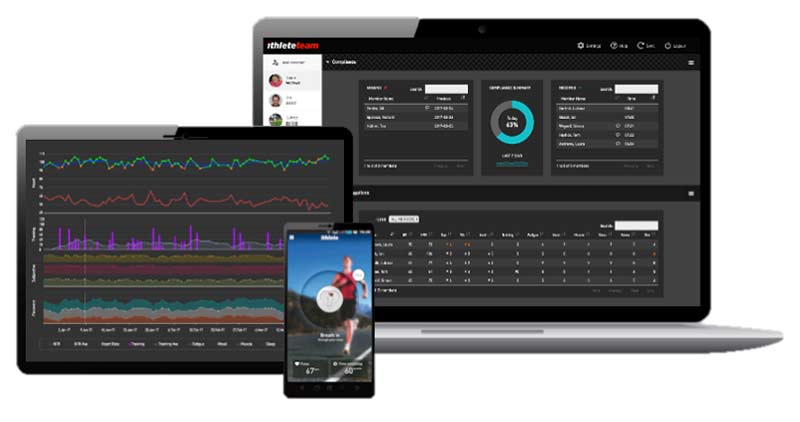
You can monitor athletes in many different ways, but actual physiological surveillance is an effective method of getting direct information on the way the body is responding to the demands of sport. In this buyer’s guide, we review the top physiological monitoring solutions on the market and, more importantly, explain how to invest the right way by sharing advice on what makes a sound system.
Physiological monitoring platforms are complex mixes of science, sport, and technology, but we did the investigation for you. This article creates a timeless process for coaches and sport scientists to follow when investing in physiological monitoring devices. While companies and their products may come and go, the concepts behind monitoring will not change much because the science is not new, by any means. When you invest in monitoring as a way to better prescribe training, your team, your athletes, and even your own training will reap dividends.
Many companies are entering the monitoring market because the collection of physiological signals is easy and the smartphone is a sound option to process information from the body. Coaches and teams need to be very cautious though, as several companies are not solvent because they rely on future venture capital or crowdfunding, making company history a factor in the list of options shared below. The benefit of the monitoring space is that the sport science community actually polices the claims and limitations of the technology, and most of the companies or product providers have peer-reviewed materials to support their positioning.
What Is Physiological Monitoring?
Physiological monitoring is the direct measure of the status of an athlete—usually a one-body system or a combined set of systems. Most monitoring systems are passive, meaning they don’t require actual physical testing to capture data, thus making them popular in elite sport. Some measures are best done after training or with submaximal efforts, but generally, you should do most of the testing early in the day to reduce interference with contextual variables like external stressors and nutrition (such as caffeine and other stimulants). Physiological monitoring looks at the internal status of the body, meaning it’s a proxy for estimating what the athlete is likely experiencing, but it’s not an invasive diagnostic like a blood test or gas exchange assessment.
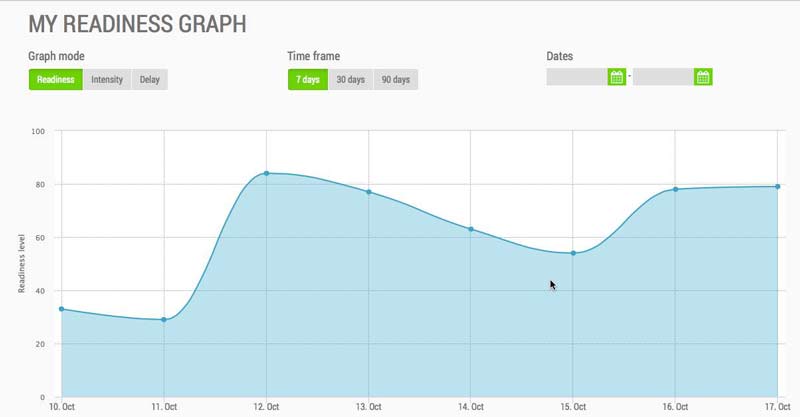
One primary reason coaches employ physiological monitoring is that they can do it daily and it helps strengthen subjective indicators due to the benefit of daily testing. Teams and coaches expect physiological monitoring to be a quick evaluation and, while it’s only a snapshot in time, chronic use can show indispensable trends and baseline patterns. Physiological monitoring can connect more invasive and more demanding tests, such as biochemical analysis, and actual physical testing, such as jump testing and strength assessment. The combined evaluation of both physiological and physical statuses, along with athlete wellness questionnaires, is enough to paint a complete picture of how the athlete is responding to the rigors of training and competition.
Data from physiological monitoring is objective, and while it may not stack up as well as other measures, it’s valid enough to cross-validate subjective and direct performance measures to give more confidence or to rethink reported information. Physiological data is valid, but it is also very narrow and only a summary of the status of an athlete. Still, one measure along with training records is enough to make intelligent decisions and smarter interventions—a benefit that coaches value and sports medicine staff can use.
The Difference Between Monitoring and Load Management
Those in coaching and rehabilitation circles are commonly confused by the difference between managing the training load and reacting to monitoring data. Training load is the prescribed and performed physical external work, and monitoring is the physiological internal response to the training or recovery periods. The main argument for monitoring (which happens to be true, for the record) is that the combination of internal and external measures is better than one or the other. Coaches can create workouts that give them the flexibility to adjust based on how the athlete responds on the fly, but it’s better to have a more precise way to anticipate how they respond to the training.
Using training load & physiological monitoring creates a tighter way to prescribe better training. Share on XNew users commonly overreact to monitoring, as it’s inappropriately used as a fatigue measure instead of a way to increase the information about athlete readiness. It’s normal and expected to equate physiological monitoring with fatigue monitoring, but overreacting to the data by overprescribing rest and underprescribing training are typical errors of teams, colleges, and private trainers.
Fatigue is extremely difficult to measure as much of it is subjective and personalized to the athlete psychologically. Fatigue is also very specific, as it’s possible to have a low workload and high amount of fatigue from travel and poor sleep. Psychological monitoring usually provides a specific general summary, and doesn’t identify the cause, so other assessments like sleep monitoring devices and other tools are sometimes necessary.
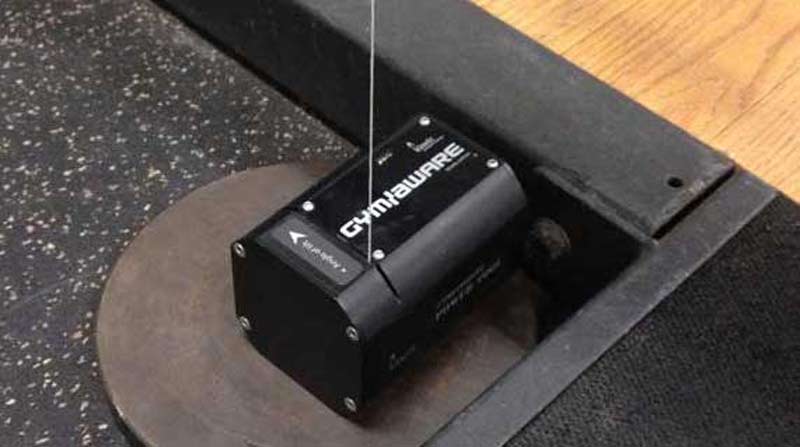
Training load devices, such as athlete-tracking wearables and velocity-based training, refine the measurement of loading to the athlete, but the summary of work requires active effort and is only useful after the session is complete. Physiological monitoring attempts to predict the direction of the athlete by showing trends over time. You can use daily readiness cautiously with some systems, but for the most part, physiological monitoring adds more confidence to the process by introducing another quality measurement to the decision-making process.
What Body Systems Are Useful for Monitoring?
Most of the systems available use the central or autonomic nervous system to summarize the status of readiness, and sometimes adaptation, of the body. Heart rate variability is the primary and most popular measurement, but some systems use brain, eye, and peripheral measures to assess the status of the body. The primary limitation and, paradoxically, primary strength, is that one measurement of one body system is not enough to fully articulate what the athlete needs to do in training or recovery, and that’s why interpretation is part of the process.
An athlete may have poor autonomic nervous system readings with HRV (heart rate variability) and perform well because they are trained well and rested, but trends and other measurements tease out false interpretation. It’s not that HRV and monitoring aren’t valid, it’s just that you can’t use them in isolation.
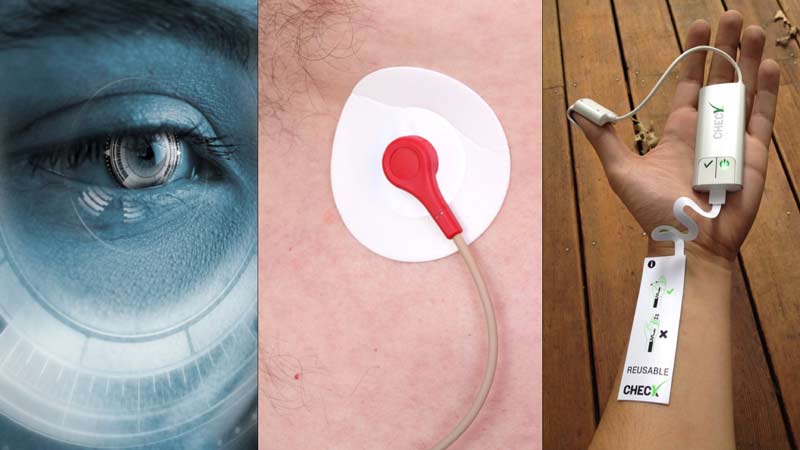
Brain status is far more difficult to measure and far less understood in the sport science literature. Slow wave measurements from the brain have value if they are combined with HRV and actual interaction with the athlete. Central indication readings, using pupil dilation rates from medical vision products, are nearly ready to explode in popularity, but because of the concussion market, they will likely experience a slow saturation process except for progressive early adopters.
The last measurement option is the peripheral nerve in the arm being electrically excited—a decades-old method of indication for readiness or vitality of wellness. This is not a direct measure; it’s an estimation of latency of non-volitional effort from the peripheral system.
Reaction time testing is valid, but not reliable, as it is very dull and the modern athlete may not engage with effort. Some creative apps and testing products embed reaction time within games, but even those options can become stale for athletes who bore easily. The field considers other systems like thermography and tensiomyography as more local and not global like the central and autonomic systems, so they belong in an offshoot category of muscle diagnostics and muscle performance instrumentation.
In order to give context to the assessment, many of the testing procedures add short questionnaires and time-stamp the testing for future analysis and deeper insight. It’s also up to the athlete and staff to replicate the testing process and be honest about conflicting variables confounding the results, such as emotional problems, freelance training, and lifestyle factors.
The Key Factors of Team Systems: Hardware, Software, and Analytics
Most of the systems include a combination of hardware and subscription-style cloud software for teams and coaches, but a few are software-only and some are hardware with export capabilities. Nearly every system requires athletes to use a repeatable resting protocol in the morning and/or before training, and nearly all of them take only a few minutes, at the most, to assess physiological status.
Nearly all physiological monitoring systems take only a few minutes to assess physiological status. Share on XSome systems can create a measurement within seconds, but those systems only collect one measurement. Almost every system is designed for team environments and uses smartphone or smart device technology, though a few use laptops or full computers. Finally, most of the systems can export data into Excel or comma separated values (.csv) for additional analysis, backup redundancy, or import into an athlete management system.
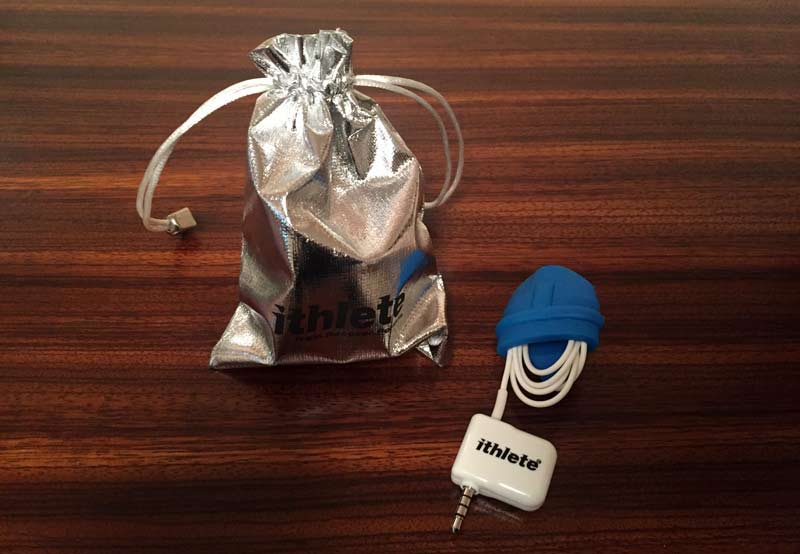
Due to the popularity of HRV, most of the systems provide or work with third-party heart rate straps or finger sensors. Some systems include proprietary hardware, meaning they are the only providers that can supply the end user with a way to acquire the data, be it from the arm, eye, or brain.
Recently, some companies in the hardware space introduced smart fabrics, or conforming Spandex materials conductive enough to pick up signals from the heart. While these are excellent options for capturing heart rate data and HRV, along with other measurements like respiration rate and accelerometer, they are not true turnkey monitoring solutions as they are data providers, not enterprise management solutions. Teams can use an array of heart rate hardware and software solutions, but the way that the software reports and manages the data usually determines whether it’s a monitoring tool or a hardware and raw data provider.
Finally, nearly all of the products have proprietary metrics or calculations that the companies feel are valid and accurate enough to have staff spend on them to make decisions. The limitation of proprietary measures is that they slow the adoption of scientific vetting, but nearly all the companies have internal and independent studies that show their value for sports performance.
The Leading Team Monitoring Solutions
Several options currently exist with physiological monitoring, and most of the products have been around for years. This makes an investment in the hardware and process a safe bet in the long run. All of the systems are geared to team environments and the expense is usually in the upfront hardware requirements. The recurring cost is the software, and most companies have sales staff or distributors that can tailor it to team or facility needs based on their environment.
The Omegawave System: The most well-known solution in monitoring is Omegawave, and the instrument collects an array of different passive measures. This includes slow cortical responses at rest, as well as heart status markers beyond HRV, such as electrocardiogram measures. Omegawave users are highly dedicated and typically very sophisticated with training and recovery.
The system evolved from a very cumbersome laptop solution to a smartphone and smart device option after other solutions disrupted them in 2009. The military and elite sport both use Omegawave, and some of the top professional teams in the world trust it, too.
ithlete HRV Monitoring: ithlete was the first smartphone sport HRV product on the market, and its measurements are both valid and reliable for team and Olympic sport. The most compelling benefit of ithlete is the rapid assessment in under one minute—a process called “an ultra-short measure.” High-profile teams, individual champions, and thousands of recreational users rely on ithlete as a tool for daily HRV tracking and monitoring.
Simon Wegerif founded the company in the U.K., which explains its close relationship with the English Premier League teams and individual players. The ithlete system has multiple collection protocols, ranging from self-guided remote options to on-site training assessment using batch collection methods with an iPad. ithlete also provides a finger sensor, making it practical for athletes who don’t find chest straps comfortable or convenient.
Firstbeat Team Solution: Firstbeat is a Finnish company with several high-profile clients and users, such as professional teams in the NHL, MLS, and European soccer clubs. The Firstbeat team system collects both training and monitoring data from the same source—the chest straps included in the package. The company has had periods of time that it had 24-hour surveillance products, but they lacked a sustainable user experience. They now focus on health and performance, not 24-hour monitoring.
Firstbeat has a protocol that enables batch collection before training, and you can use the solution with individuals, as well as teams. Other features include additional analytics and internal fatigue metrics.
Polar Team System: Similar to Firstbeat, Polar is a heart rate system that evolved into a tracking and monitoring company over the last few years. Also based in Finland, the company provides HRV as a raw measure to their system, with some additional filtering and management. Polar’s strength is that you can use it in research as well as in the field, making it a sound investment for coaches wanting to combine physiological responses to acute workloads and physiological monitoring before training.
The Polar system also includes commercial products that are wearable and provide similar measures, but with less depth than their professional solution. Polar is the only combined training load and physiological monitoring solution for teams, and it has a strong presence with soccer.
Konan Medical EyeKinetix: This is the only pupillography system listed here, due to the strength and history of its native product line. Konan is not a sports monitoring company, but the hardware has the power and potential to lead the market in vision-driven data for human performance. Pupillography is not new, and the approach to assessment from the eye is thousands of years old. The eye is a data-rich source of information, and trained medical staff can manually assess the eye for nervous system status, but automation enables better quality and quantity of data due to cameras and other hardware features.
Konan is transitioning to additional products, and users can export the data to create internal measures with some creativity (read: hacking). The company is currently poised to make breakthroughs, and is working with experts to support athletes beyond the physiological monitoring market. California-based Konan is one of the leading solutions in vision performance.
Checkmylevel from FAM Sports: The only peripheral or PNS device, Checkmylevel (CML) uses electrical stimulation and an accelerometer to determine how system fatigue of the body trends from a local assessment. FAM Sports is one of the many Finnish companies that provide sports readiness data, and the startup is located in the innovation center of Oulu, a city known for technology development. The CML data is similar to HRV, but isn’t central or autonomic in nature.
One of the challenges with the system is that the process requires electrical stimulation, which is something not all athletes are comfortable with. However, with the growing use of EMS products, most elite athletes will find this requirement a non-issue. Several noted coaches and high-level consultants endorse the system, and Hakan Andersson and other national team coaches use it extensively.
Kubios Open Source Software: This last Finnish company we mention is a research solution for sport scientists. Team sport does not typically use Kubios because the user experience is not optimized for workflow. You can use Kubios with any Windows machine, and it offers online videos and a user manual for those looking to take samples of heart rate data to the next level. While staff who are trained and knowledgeable about the biological components of the heartbeat in detail can use this software in team environments, it’s not user-friendly or optimized for team environments.
Kubios has no proprietary “black box” metrics and is free to use for any health- or sport-related endeavor. Users must have their own hardware, such as lab grade heart rate monitors or similar. The software is over a decade old, and is internationally recognized as a valid tool in heart rate variability assessment.
Strive Tech: This Seattle-based company is rapidly growing in the athletic and military markets as a unique, multi-faceted monitoring system that integrates three systems in one. Founded around the idea that comfort leads to compliance and compliance allows for consistent data collection, Strive features smart compression clothing embedded with EMG sensors as well as measuring motion via GPS, accelerometer, magnetometer, and 3-Axis gyroscope.
The solution integrates the measurements in a cloud-based software that provides actionable insights and reporting via an app, web-based portal, and API. Strive is currently being used in the NCAA and NFL with use cases across all areas of performance including enhancing return-to-play protocols, injury prevention, athlete profile development, training load management, and peak performance.
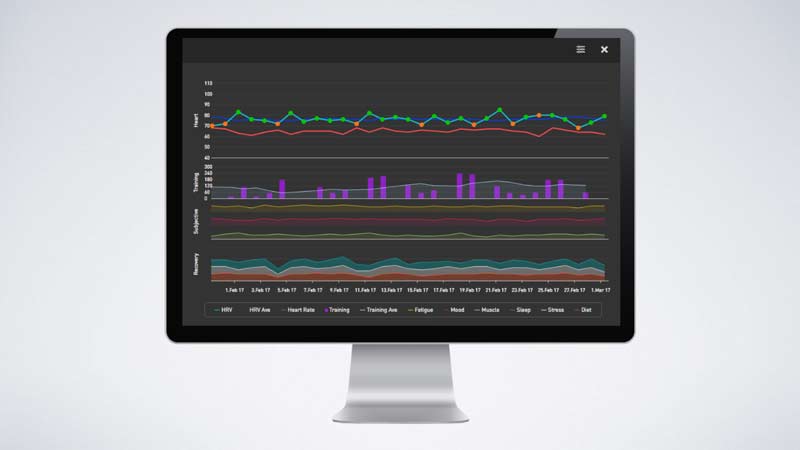
As mentioned earlier, the assessment of athletes requires a repeatable protocol; something reliable enough to give confidence that it will be sustainable over the course of a season. Some teams have elected to use a mixed environment of multiple systems, giving their athletes choices as to what they prefer and then pushing the data into an AMS system to show trends. None of the data is interchangeable, so you must interpret each system separately.
Choosing the Right System for Your Team or Training
Every system has pros and cons, along with different price points. Therefore, you should buy based on consistency of use, and not on power or potential. Some systems are designed for daily use, while some systems can be used a few times a week and still be very effective. Nearly every program has team software, but just about every system can also export the data and upload it to an AMS system.
Buy a physiological monitoring system based on consistency of use, not on power or potential. Share on XMonitoring should complement the decision-making involved in training programs and not replace the coach, as interpretation is everything. Monitoring athletes is now a staple in team training, and this guide should be enough to enable you to make the right choice in picking the right system.
[mashshare]




